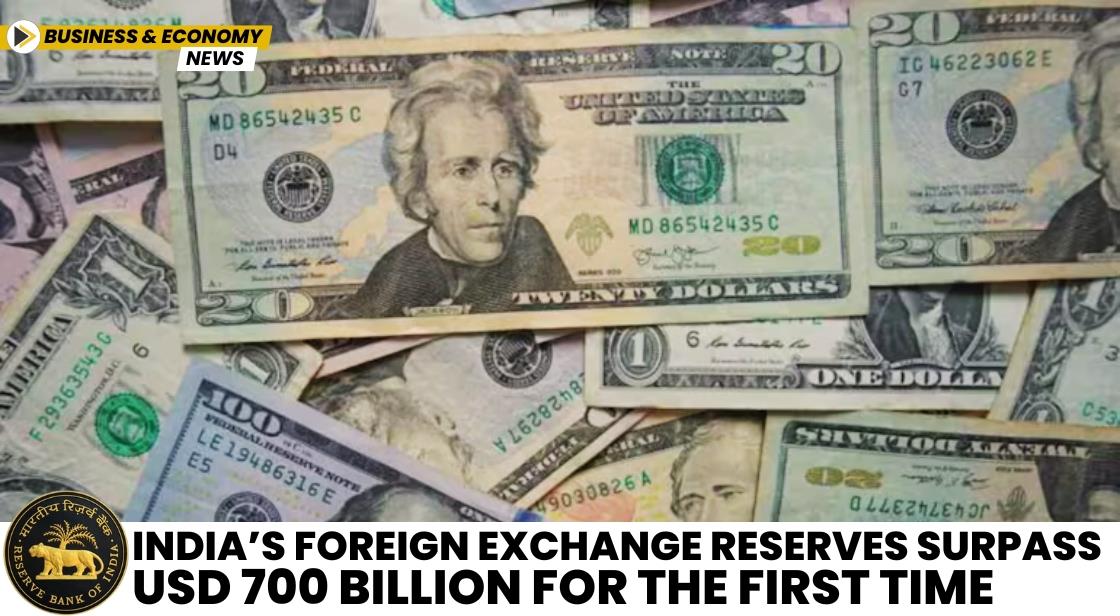India’s Foreign Exchange Reserves Surpass USD 700 Billion for the First Time

Podcast
News Synopsis
In a historic economic milestone, India’s foreign exchange reserves have soared beyond USD 700 billion for the very first time. According to the latest data released by the Reserve Bank of India (RBI) on Friday, the country’s reserves surged by USD 12.588 billion during the week ending on September 27, 2024. This boost pushed India's total foreign exchange reserves to an unprecedented level of USD 704.885 billion.
Prior to this, India's foreign exchange reserves had stood at USD 692.296 billion just a week earlier. The swift rise reflects a significant boost in India’s economic buffer, signaling strengthened economic resilience amid global financial challenges and uncertainties.
India's Foreign Exchange Reserves Breakdown
As per the RBI’s latest data, the Foreign Currency Assets (FCA), which form the largest chunk of the reserves, accounted for USD 616.154 billion. In addition, the country’s gold reserves amounted to USD 65.796 billion. These components collectively contribute to safeguarding India’s economy by providing a robust financial cushion.
Economic Significance of the Milestone
Crossing the USD 700 billion threshold marks a pivotal achievement for India’s economic standing, providing a solid defense against external financial shocks. The reserves now have enough capacity to cover more than a year’s worth of India’s projected imports. This achievement significantly boosts the nation’s ability to deal with trade imbalances and external shocks.
India has notably added approximately USD 58 billion to its reserves in the 2023 calendar year, a dramatic contrast to the decline of USD 71 billion recorded in 2022. This uptick in foreign exchange reserves highlights India's improved economic stability, and a strong foreign reserve base can shield the country from volatile capital flows and currency fluctuations.
How the RBI is Managing Foreign Exchange Markets
Foreign exchange reserves, held in major reserve currencies such as the US Dollar, Euro, Japanese Yen, and British Pound Sterling, serve as a buffer that central banks use to manage exchange rate volatility and maintain economic stability. The Reserve Bank of India (RBI) has been actively using this reserve to stabilize the Indian Rupee.
The central bank has taken a strategic approach by buying dollars when the rupee strengthens and selling dollars when the rupee weakens. This method has played a crucial role in transforming the Indian rupee from one of the most volatile currencies in Asia a decade ago to one of its most stable currencies today.
Impact on Foreign Investment and Currency Stability
A stable currency not only benefits the overall economy but also boosts the appeal of Indian assets to international investors. A predictable and steady currency strengthens investor confidence, offering enhanced performance of investments and improving India’s attractiveness in the global investment landscape. The management of India’s foreign exchange reserves is a testament to the country's commitment to maintaining macroeconomic stability amid an evolving global financial environment.
Conclusion:
India's foreign exchange reserves crossing the USD 700 billion mark represents a significant milestone in the country's economic journey. This historic achievement not only strengthens India's ability to navigate global financial uncertainties but also underscores the effectiveness of the Reserve Bank of India's strategic management of the foreign exchange market.
The robust reserve base, largely supported by Foreign Currency Assets and gold reserves, offers a formidable financial cushion that can cover more than a year of imports. The stability of the Indian Rupee, now among the least volatile currencies in Asia, further enhances the country's attractiveness to global investors. As India continues to build on this economic foundation, the country is well-positioned to handle future financial challenges while maintaining its growth trajectory.





